It is frequently completely unrelated to the toilet itself when a toilet develops leaking towards the base of the bowl. Resetting your toilet can frequently solve any issue, including clogs, running, and improper flushing. Although resetting a toilet can appear complicated, it is a relatively easy job that most individuals can perform using the right equipment and knowledge.
Reset a toilet can quickly fix problems with the flushing system or other common issues. There is no requirement for professional assistance because the procedure is easy, and anyone may do it.
This article will guide you through the steps of how to reset a toilet quickly. You’ll learn to identify the issue and resolve it by using the required tools and methods.
This guide will give you the information and confidence you need to reset your toilet and get it back to functioning correctly, whether you have a clogged toilet, a toilet that won’t stop running, or a toilet that won’t flush.
So if you’re sick of dealing with a broken toilet, continue reading to find out how to fix it quickly. After reading this manual, you will have the information and confidence required to reset your toilet and get it back to working perfectly.
Steps of Reset a Toilet:
1. Turn the water off
The first step in most plumbing repairs is to turn off the water. Look for a fixture shut-off valve on the water supply stub-out pipe near the base of the toilet.
To turn off the water, fully clockwise turn the valve handle. You must turn off the water at the nearest branch line valve or the main shut-off valve next to the water meter if there is no fixture shut-off valve.
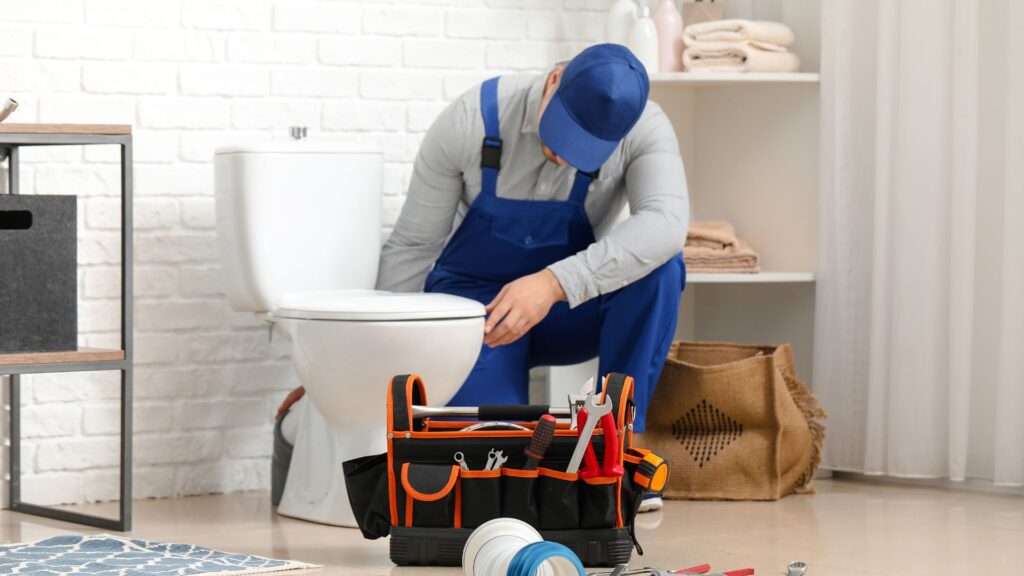
2. Cut the Supply Line off
Disconnect the flexible supply tube attached to the fill valve’s tailpiece on the toilet. To remove the coupling nut from the tailpiece of the tube, you might be able to by hand, or you might need to use channel-lock pliers.
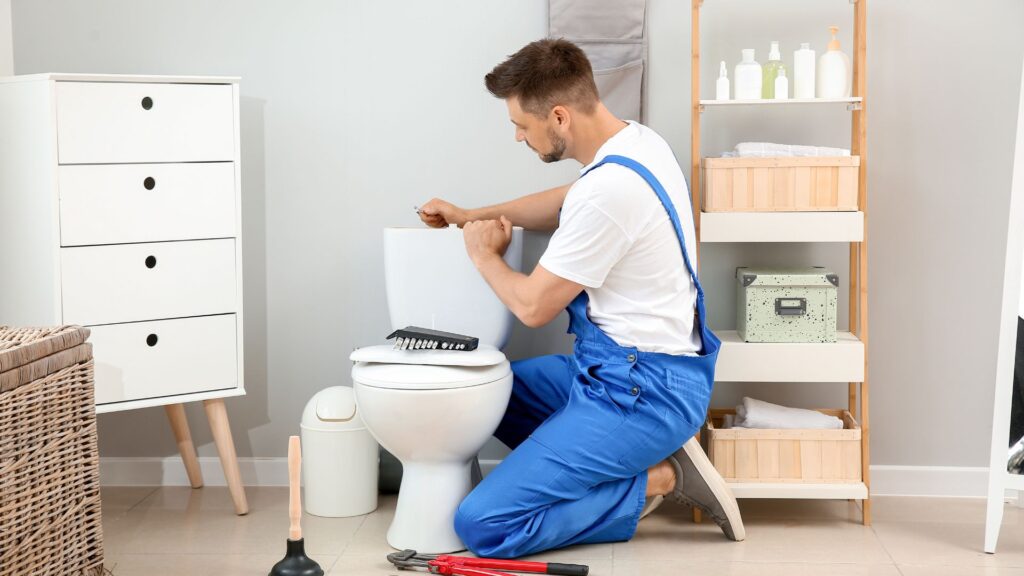
3. Eliminate any leftover water
The tank cover should be taken off and placed in a secure location. Soak up the remaining water after the tank is mainly empty using a sponge. Wring out the sponge into a pair.
Use the sponge to absorb and eliminate any water that may still be in the toilet bowl.
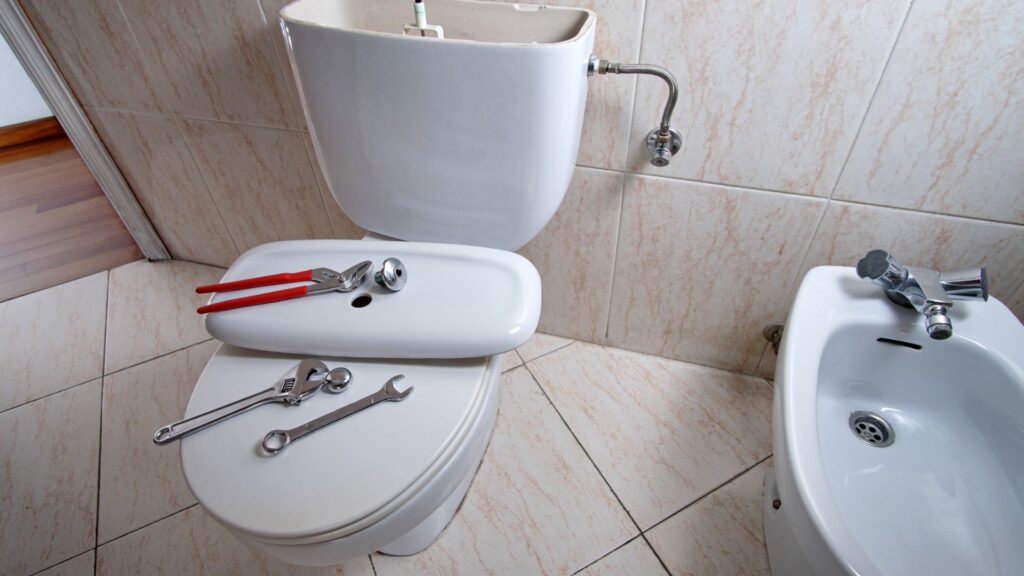
4. Cut the floor bolts off
With an adjustable wrench or channel-lock pliers, the nuts and washers can be removed. Using a putty knife, remove the floor bolts’ nut caps. They won’t become separated from the toilet if you place them in the open tank.
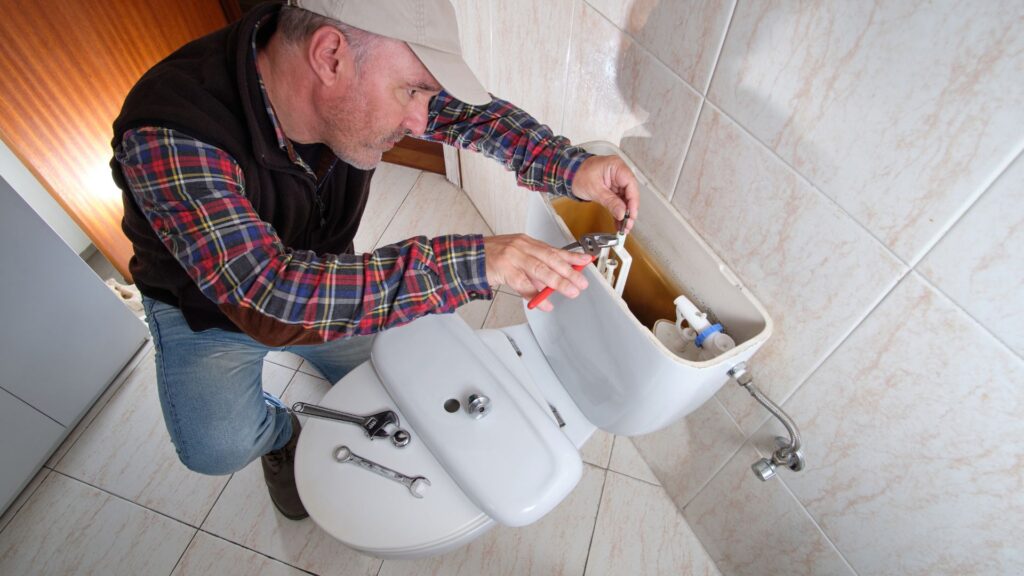
5. Remove the toilet seat
The old newspaper should be spread out on the ground in a nearby but still accessible bathroom area. This will shield the unclean, gummy wax on the toilet’s base from the flooring.
Hold it directly in front of the spot where the toilet bowl joins to the tank as you straddle the bowl. Use your knees instead of your back to lift the toilet off the floor. Then, turn it over and place it in the newspapers.
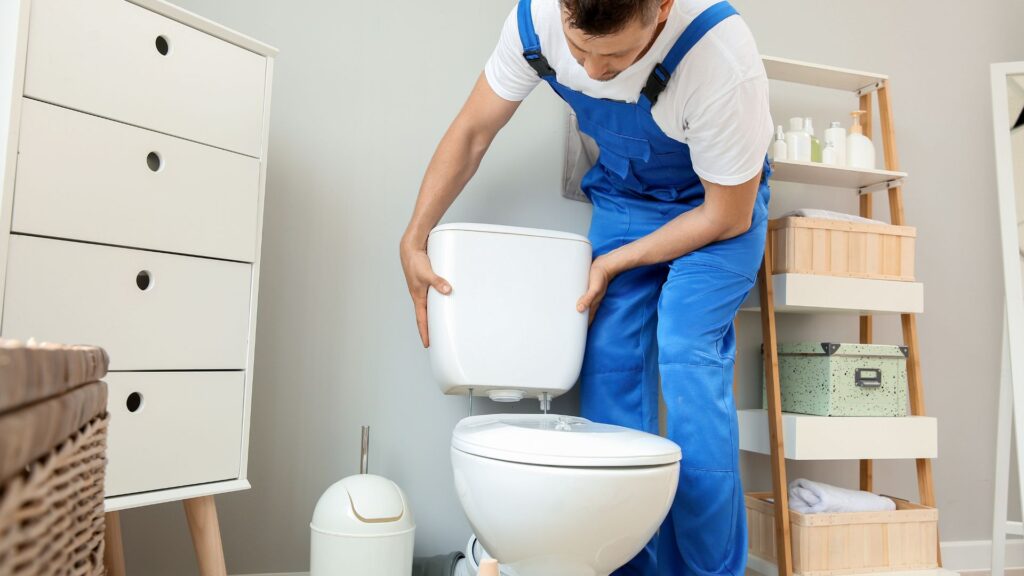
6. Clean the Toilet Bowl’s Bottom
To ensure a gap-free seal when resetting the toilet, make sure the bottom is clean. With assistance, this procedure is also more straightforward.
Use a knife to remove any old wax that has become stuck to the toilet’s bottom while your helper tilts the toilet. Keep an eye out for the toilet’s “horn,” which is the spherical aperture that fits into the floor drain. To adequately seal against the drain, this area must be smooth and clean.
Be extremely careful when turning the toilet on its side because the porcelain can easily break and crack.
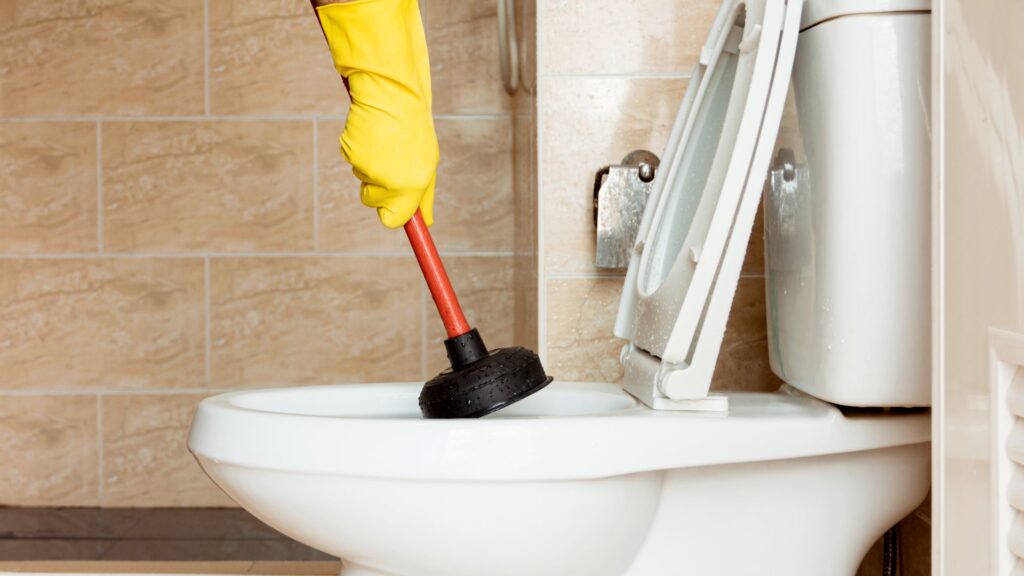
7. Put on a fresh wax ring.
After cleaning the toilet’s base, you’re prepared to install a fresh wax ring. Wax works best when it is warm and flexible, so placing it near a heater or radiator for a while or placing it near a window with plenty of sunlight will help soften it.

8. Set the toilet
Make sure the toilet sits square to the wall, and the floor bolts extend up through the holes in the toilet base before carefully lifting the toilet onto the wax ring and floor bolts. Once more having assistance is helpful as you position and lower the toilet.
Once the bolts are in place, press the toilet down while moving it back and forth to ensure a uniform seal. This will gently compress the wax ring.
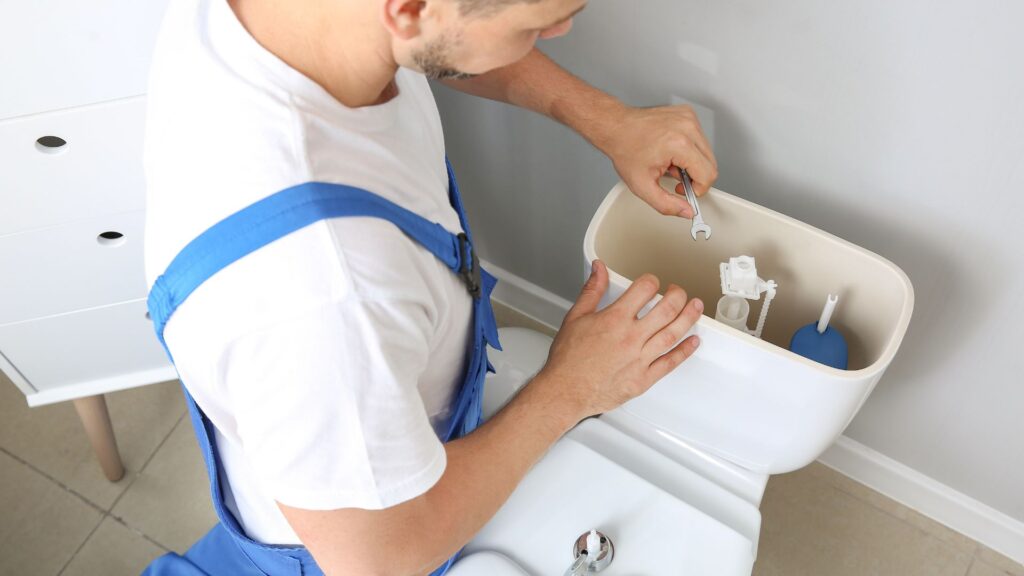
9. Reconnect the Fill Valve after Tightening the Bolts
Thread the nuts onto the floor bolts with an adjustable wrench and tighten them until the toilet is sturdy and without swaying. To ensure that the toilet is adjusted evenly, it is crucial to move gently and carefully from side to side as you tighten it.
Avoid overtightening, which could cause the bowl’s base to shatter. Put your arms around the bowl and try to sway it back and forth to see whether it is steady. If it moves, keep tightening the nuts while switching between the sides. Reinstall the caps on the floor bolts.
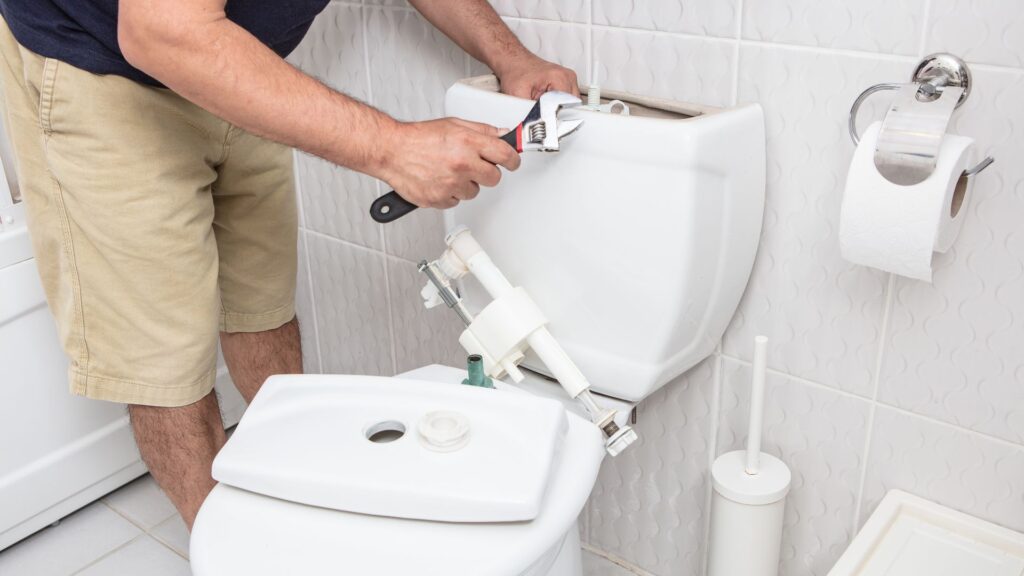
Why does a toilet need to be reset?
There are many instances where a toilet needs to be reset. Common reasons are:
Toilet clogs: These might prevent a proper flush from occurring. Resetting the toilet may require clearing the obstruction and reestablishing the drain’s flow.
Running toilets: These toilets keep flushing long when the tank is full, wasting water and raising your water bill. To stop the toilet from running continuously, the flush valve or flapper may need to be adjusted.
Weak flush: A weak flush can be brought on by several things, including a clogged jet or a broken flush valve. The flush valve or jet may need to be cleaned or replaced to reset the toilet.
Leaks: Leaks can happen in the tank, bowl, or base of the toilet, among other places. Finding the leak’s source and fixing it may necessitate resetting the toilet.
General wear and tear: Over time, toilet components like the flapper, fill valve, or flush valve may become worn out or broken, resulting in the toilet acting up. Replacing the worn-out or broken components may be necessary to reset the toilet.
How do you reset a running toilet?
Running toilets use more water and raise your water bill because they keep flushing even after the tank is full. The steps to stop a running toilet are as follows:
Find the water supply valve: It is typically around the base of the wall behind the toilet or behind it. To stop the water supply to the toilet, turn the valve anticlockwise.
Empty the tank: Flush the toilet, then squeeze the lever to drain any residual water.
Examine the flapper: The flapper is the rubber valve that controls the release of water into the bowl and is located at the bottom of the tank. The toilet may run if the flapper is damaged, fractured, or doesn’t seal properly—whenever the flapper needs to be changed.
Examine the chain: When pulled, the chain lifts the flapper and links the handle to the flapper. If required, shorten or lengthen the chain. The flapper may only seal properly if the chain is short enough.
How do you reset a toilet flange?
A toilet’s waste pipe is connected to the bowl by a circular piece of plastic or metal known as a toilet flange. The steps to reset a toilet flange are as follows:
- You can stop the toilet’s water delivery by rotating the valve anticlockwise. To get rid of any leftover water in the tank and bowl, flush the toilet.
- Disconnect the toilet from the flange by releasing the bolts holding it in place, then carefully raising the toilet.
- Use a brush and cleanser to remove any buildup or debris from the flange and the region around it.
- Examine the flange for any signs of deterioration, such as cracks, corrosion, or other issues. Replace the flange if it has been damaged.
- To stop leaks, the wax ring forms a seal between the toilet’s flange and the bowl’s bottom. If the wax ring is broken or worn out, get a new one.
- Reinstall the toilet by placing it carefully on the flange and ensuring the bolt holes line up with the bolts. To keep the toilet in place, tighten the bolts.
Once the previous steps have been finished, restart the water supply and test the toilet to ensure it is operating correctly and that there are no leaks.
How much does it cost to reset a toilet?
Depending on the type of maintenance or replacement required, the price to reset a toilet can change. The followings are some typical toilet repairs and their approximate costs:
- A skilled homeowner can replace a flapper for an average cost of $5 to $20.
- A replacement fill valve typically costs between $20 and $40, and a competent homeowner may replace one themselves.
- A replacement flush valve typically costs between $20 and $50, and a competent homeowner may replace one themselves.
- A skilled homeowner can replace a wax ring for between $3 and $10.
- Depending on features and design, a new toilet costs between $100 and $1,000.
- A plumber can charge between $50 and $150 per hour for labour if you are uncomfortable doing the repairs yourself.
Identifying a Broken Wax Ring
Wax rings are rings made of wax that fit between the toilet’s base and flange, closing the area to stop leaks. The following are some indicators that a wax ring may be broken:
- If you see water around the toilet’s base or on the ground, the wax ring may be cracked and has to be changed.
- The toilet that rocks or wobbles as you sit down may indicate that the wax ring is not creating a tight seal.
- Strong sewer odours may indicate that the wax ring in your bathroom is not properly sealing, allowing sewer gas to escape. This may be a symptom if you notice a strong sewer Odour emanating from your bathroom.
- Water stains or rust may indicate a wax ring failure if found on the floor or close to the toilet’s base.
- If the toilet feels unsteady or loose, it may be a sign that the wax ring has broken and the toilet is not securely fastened to the flange.
What does it mean to reset a toilet?
To repair or fix a toilet so that it functions properly again is to reset it. Analyzing and correcting typical issues with toilets, such as blockages, running water, weak flushes, leaks, and general wear and tear, is frequently referred to as “resetting.” This procedure may include locating the issue, looking for and replacing any necessary parts, modifying settings, and cleaning. Resetting a toilet aims to restore its effective and proper operation. A skilled plumber or a capable homeowner can complete the task.
FAQ’s
Disconnecting the toilet from the flange, taking it out of the bathroom, and then cleaning, fixing, or replacing it before reinstalling it is the steps involved in removing and resetting a toilet. The general processes to remove and replace a toilet are as follows:
You can stop the toilet’s water delivery by rotating the valve anticlockwise. To get rid of leftover water in the tank and bowl, flush the toilet.
To clear any obstructions, unscrew the toilet tank lid and use a plunger or toilet auger.
The toilet can be disconnected from the flange by releasing the bolts holding the toilet in place using a wrench. Lift the toilet from the bathroom with care.
Check the toilet for any wear or damage. If it’s in good shape, give it a thorough cleaning. If it can no longer be fixed, buy a new one.
Any worn or broken components, such as the wax ring, flapper, fill valve, or flush valve, should be replaced.
Reinstall the toilet on the flange, and carefully line up the bolts with the flange’s holes. Apply a fresh wax ring to the toilet’s base and firmly push it onto the flange. To keep the toilet in place, tighten the bolts.
Restarting the water supply will allow you to test the toilet to ensure it is operational and leak-free.
The specific fixes or replacements required will decide how much it will cost to reset a toilet. A professional individual may perform simple repairs like changing a flapper, fill valve, flush valve, and wax ring for $5 to $40. Depending on the features and design, replacing a toilet might cost anywhere from $100 to $1,000. The labour cost of hiring a plumber might range from $50 to $150 per hour. It’s essential to remember that these are only ballpark figures and that the cost may vary as per your location and the problem of the repair. It is advised to talk with a plumber or home improvement specialist for a accurate estimate of the repair or replacement costs.
You will need a toilet jack, a fresh wax ring, and a putty knife to lift a toilet yourself. By rotating the valve anticlockwise, switch off the water supply to the toilet. After that, flush the toilet to clean the bowl and tank. The old wax ring at the toilet’s base should then be removed using the putty knife. Lift the toilet carefully off the ground, keeping it level to prevent spilling any remaining water. Put the toilet jack underneath the toilet and raise it to the desired height using it. Replace the old wax ring on the toilet’s base, then carefully drop the toilet back into position. Check for leaks after reconnecting the water supply. Turn on the water supply once more and test flush the toilet to ensure everything is in working order.
Several pieces of equipment, including a fresh wax ring, a putty knife, and a toilet mounting kit, are required to reconnect a toilet (if the old mounting hardware is damaged or corrupted). By rotating the valve anticlockwise, switch off the water supply to the toilet.
The old wax ring at the toilet’s base should then be removed using the putty knife. Make that there are no obstructions or corrosion in the region surrounding the toilet flange. Make sure the new wax ring is positioned correctly and securely fastened to the toilet’s base. Place the mounting holes on the toilet’s base in line with the holes in the flange and gently lower the toilet back onto it.
If a mounting kit is provided, use the included screws to attach the toilet to the flange. Alternatively, use the original mounting hardware to reattach the toilet if it is still in excellent shape. To hold the toilet to the flange, tighten the screws or nuts as necessary. Reconnect the water supply after that, then look for leaks. To check that the toilet is functioning correctly, turn on the water supply and perform a test flush.















